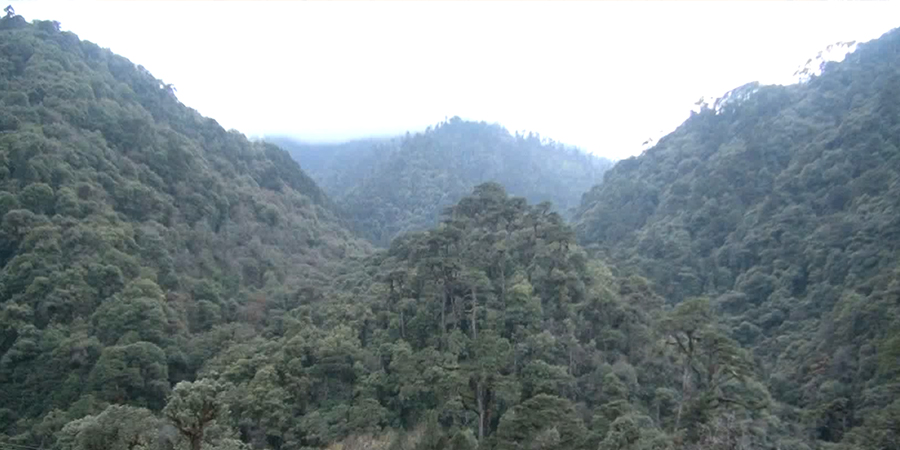
Not very long ago, the day in a Bhutanese home would usually end with children gathered around a fire listening to stories from the elderly. But this tradition is already disappearing along with folklore that kept children interested and occupied. One such lore is the legend of the maleficent demoness, the Nyala Duem, that lived along the Wangdue-Trongsa highway.
As dusk settles, people would rush home fearing the Nyala Duem in the past. It is believed that the demoness lived in the concave mountain, among the dark forest, opposite the Chendibji River taking lives and bringing sickness to the locals and travellers alike.
According to verbal narratives passed down from generations, the demoness would sometimes transform herself into a monk, other times into an attractive woman and occasionally into a man wearing a conical hat.
 Among many accounts of the Duem, the most popular is how Garp Lunghi Khorlo lost his soul to her. Elders say that the fastest messenger in the olden days, known as Garp Lunghi Khorlo or the ‘wheels of the wind’ wished the Duem to take his life while crossing the Nyalaluem as he was very tired. He later saw a beautiful woman washing the entrails of an ox in a stream. Ox was his birth sign.
Among many accounts of the Duem, the most popular is how Garp Lunghi Khorlo lost his soul to her. Elders say that the fastest messenger in the olden days, known as Garp Lunghi Khorlo or the ‘wheels of the wind’ wished the Duem to take his life while crossing the Nyalaluem as he was very tired. He later saw a beautiful woman washing the entrails of an ox in a stream. Ox was his birth sign.
Eighty-three-year-old Rigyem from Nyala Drangla Goenpa says the stories about the demoness was very much alive during her childhood days.
“There wasn’t any paved road here when I was a child. And due to fear of the Nyala Deum, no travellers from Wangdue to Trongsa would dare to halt a night besides designated places like Nubding, Chendibji and Tangsibji. They would not stay anywhere between these places,” she said.
The maleficent demoness was believed to be subdued by Drubthob Druzhida in the 17th century when she tried to harm the saint. It is said that the demoness turned herself into a huge serpent and entered the Nyala Lhakhang. However, the saint prevailed and turned her into one of the protecting local deities. The Phub or dagger used in subduing her is still preserved in the Lhakhang.
“When Drubzhida was subduing the Nyla Duem, the Deum confessed to the saint that she was pregnant with a son. She requested the saint to raise her son. The son was named Norlha Peza Drugay, and until today, he is worshipped as our main local deity here,” said Angay Rigyem.
Some elders in the village also say they would be reminded of the demoness right upon sighting the Jarong Khashor Choeten at Chendebji in Tangsibji Gewog during their childhood days but not anymore. They say developmental works along the sites are eventually impacting the folklore to disappear.
“Moreover, there is no one to narrate the story. And then there are no listeners as well. So this is how the folklore is vanishing,” said Padey, from Tshangkha in Trongsa.
“We just heard a little from here and there. We don’t exactly know the details, and that’s one of the reasons why it is not popular among the youth now,” added Gyembo Dorji, from Tangsibji Gewog.
They fear there won’t be anyone to narrate these rich folklores in the future.
However, they can put to rest this fear, since some ten monks undergoing Buddhist studies in Nyala Lhakhang are conducting research to document and write a book on it.
“The one or two who knows about the story does not have a concrete base. So it’s high time we research and preserve the story,” said Chimmi Nidup, from the Nyala Ugyen Dargay Choeling Lobdra in Tangsibji Gewog.
The legend of Nyala Duem will live thanks to this undertaking by the monks but there are many folklores that are slowly losing their place in Bhutanese history.
Passang, Trongsa
Edited by Sonam












